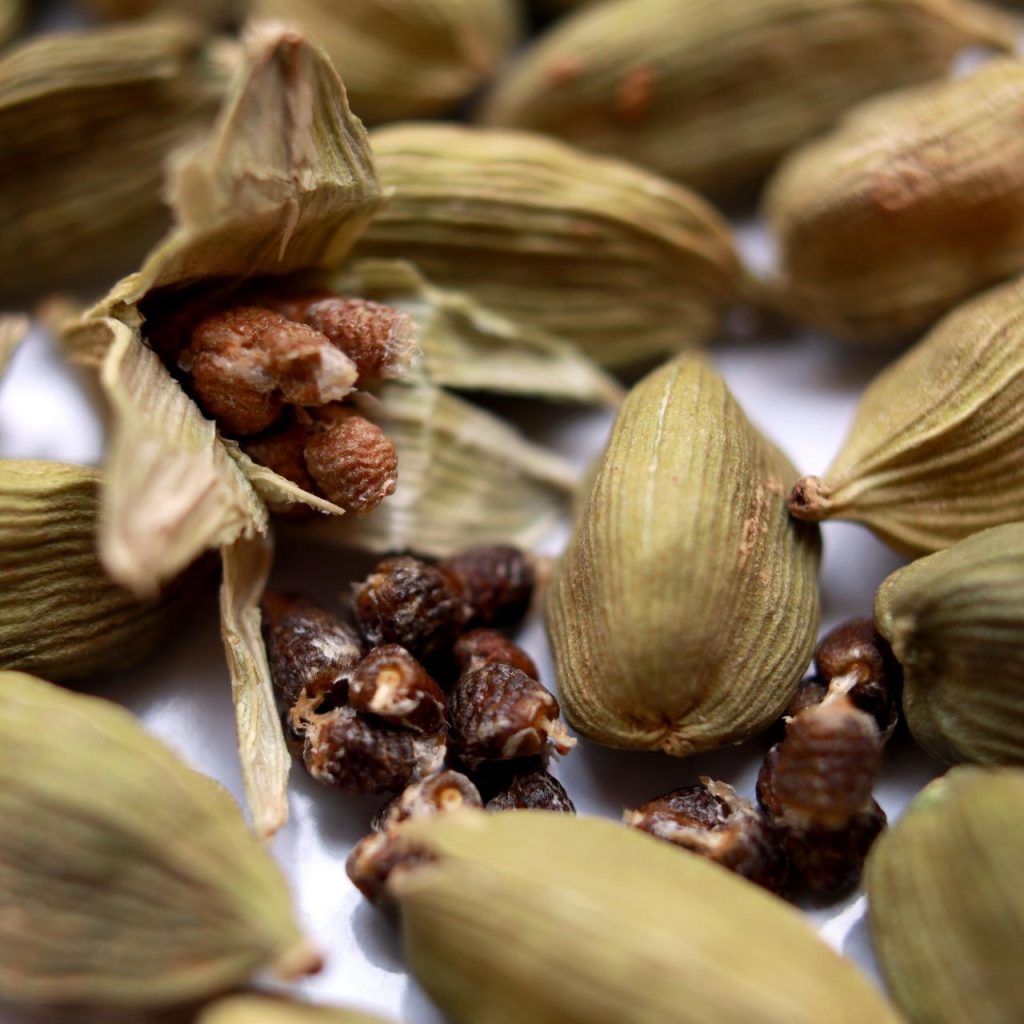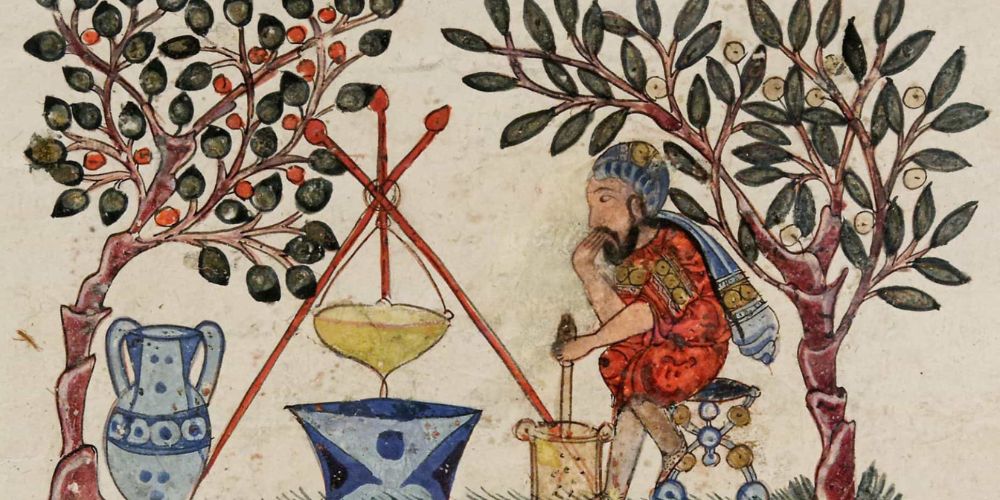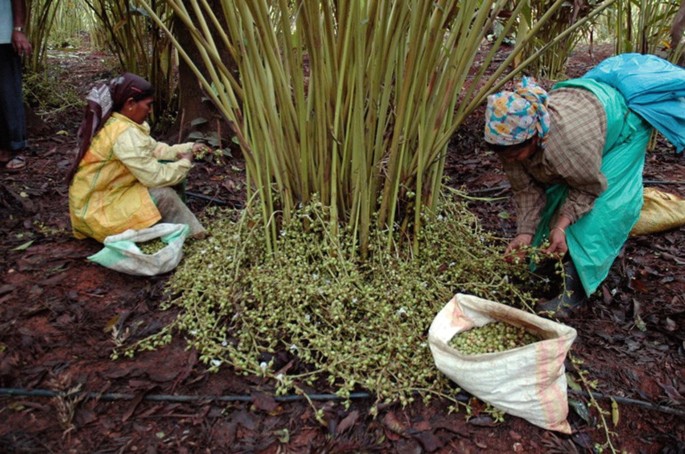With its exotic aroma and versatile flavor, Cardamom stands as one of the most prized spices in the world. From ancient civilizations to modern kitchens, its allure has captivated culinary enthusiasts and healers alike.
In this comprehensive exploration, we delve deep into the rich history, cultural significance, culinary uses, health benefits, and global trade dynamics of cardamom.

1. Origins and History of Cardamom
Cardamom’s story begins in the lush forests of the Western Ghats in India, where it was first cultivated over 3,000 years ago. Traded along the ancient spice routes, it found its way to distant lands, including Egypt, Greece, and Rome. Revered by the Egyptians for its aromatic properties, cardamom symbolized luxury and prosperity.
Cardamom, known as the “Queen of Spices,” has a rich history dating back thousands of years. Originating from the lush forests of the Western Ghats in southern India, it was first mentioned in ancient Indian texts like the Vedas and Ayurvedic texts, highlighting its medicinal properties and culinary uses.

Traders introduced cardamom to ancient civilizations such as Egypt, Greece, and Rome, where it became highly prized and was used in perfumes, incense, and medicine. It also played a significant role in ancient Arabian culture, where it was used to freshen breath and as a symbol of hospitality.
During the Middle Ages, cardamom became a valuable commodity along the spice trade routes, leading to its widespread cultivation in regions like Sri Lanka, Guatemala, and Tanzania. European explorers like Vasco da Gama sought to control the spice trade, further popularizing cardamom in the West.
Cardamom remains a vital ingredient in cuisines worldwide, from Indian curries to Scandinavian pastries. Its complex flavor profile, with hints of citrus, mint, and spice, continues to captivate chefs and home cooks alike, ensuring its enduring popularity and status as one of the world’s most beloved spices.
“Brewing Wellness: Unraveling the Health Benefits of Cardamom Tea”
2. Botanical Profile and Varieties of Cardamom
Cardamom, belonging to the ginger family (Zingiberaceae), is a perennial herb with large, lance-shaped leaves and clusters of small, pale green flowers. The seeds, encased in small pods, are the prized part of the plant, valued for their intense flavor and aroma.
There are two primary varieties of cardamom:
- Green Cardamom (Elettaria cardamomum): Also known as true or small cardamom, this variety originates from India and is prized for its delicate, sweet, and floral flavor. Green cardamom is the most common type used in cooking and is favored in Indian, Middle Eastern, and Scandinavian cuisines.
- Black Cardamom (Amomum subulatum): Native to the eastern Himalayas and parts of Southeast Asia, black cardamom has a smoky, earthy flavor with camphor notes. It is larger and darker than green cardamom, with a rough, wrinkled pod. Black cardamom is often used in savory dishes, particularly in Indian and Chinese cuisines.

Both varieties of cardamom are cultivated in various countries, including India, Guatemala, Sri Lanka, and Nepal. They are harvested by hand when the pods are fully ripe and dried through sun-drying or smoke-drying methods to preserve their flavor.
Cardamom’s versatility and distinct flavor make it a staple in spice blends, desserts, beverages, and savory dishes, adding depth and complexity to a wide range of culinary creations.
“Brewing Wellness: Unraveling the Health Benefits of Cardamom Tea”
3. Cultivation and Harvesting of Cardamom
Cardamom cultivation requires specific environmental conditions, typically thriving in tropical and subtropical regions with well-drained soil and high humidity. The plant prefers partial shade and moderate temperatures, ideally between 10 to 35°C (50 to 95°F). It is primarily cultivated in countries such as India, Guatemala, Sri Lanka, and Nepal.

The process begins with the planting of cardamom seeds or rhizomes in prepared soil. These seeds take several weeks to germinate, after which the plants require regular watering and maintenance. Cardamom plants take around two to three years to reach maturity and start producing pods.
Cardamom pods are harvested when they are fully ripe, which usually occurs once a year. Harvesting involves carefully plucking the pods from the plants by hand to avoid damaging them. In some cases, farmers may also cut entire stems to facilitate harvesting.
“Brewing Wellness: Unraveling the Health Benefits of Cardamom Tea”
After harvesting, the pods undergo a curing process to develop their characteristic flavor and aroma. This process typically involves drying the pods in the sun or through smoke-drying methods. Sun-drying is the more common method, as it helps preserve the green color and delicate flavor of the pods, while smoke-drying, often used for black cardamom, imparts a smoky aroma and flavor.
Once dried, the cardamom pods are sorted, graded, and packed for distribution to local markets or export. The entire cultivation and harvesting process requires careful attention to detail and expertise to ensure the highest quality yield.
4. Culinary Delights of Cardamom
Cardamom is a versatile spice that adds a unique and aromatic flavor to a wide range of culinary delights across various cuisines.
In sweet dishes, cardamom’s warm, citrusy, and slightly floral notes elevate desserts to new heights. It is a key ingredient in many Indian sweets like kheer (rice pudding), gulab jamun (deep-fried milk balls soaked in syrup), and various milk-based desserts like kulfi (Indian ice cream). Cardamom also shines in Scandinavian baking, where it is used in pastries like Swedish cinnamon rolls and Finnish pulla bread.
In beverages, cardamom lends its distinctive flavor to chai tea, where it combines harmoniously with spices like cinnamon, cloves, and ginger. It is also a popular addition to coffee, especially in Middle Eastern and Turkish cuisines, where cardamom-infused coffee is a beloved tradition.
In savory dishes, particularly in Indian and Middle Eastern cuisines, cardamom adds depth and complexity to meat and rice dishes. It is a key ingredient in Indian biryanis, where it infuses the rice with its fragrance, and in Middle Eastern dishes like kabsa, a spiced rice dish with meat, nuts, and raisins.
Whether used in desserts, beverages, or savory dishes, cardamom’s ability to enhance flavors and create a delightful culinary experience makes it an essential spice in kitchens around the world.
5. Health Benefits and Medicinal Uses
Health benefits and medicinal uses of various herbs, plants, and natural remedies have been documented for centuries across cultures worldwide. These remedies often provide effective alternatives or complements to conventional medicine. For example, ginger has been used to alleviate nausea and aid digestion, while turmeric possesses anti-inflammatory properties that may help manage conditions like arthritis. Echinacea is known for its immune-boosting abilities, potentially reducing the severity and duration of colds.
Similarly, herbal teas like chamomile can promote relaxation and improve sleep quality, while peppermint oil has been shown to relieve symptoms of irritable bowel syndrome (IBS). Additionally, the use of garlic as a natural antibiotic has gained recognition for its ability to combat infections and support cardiovascular health.
In traditional Chinese medicine, herbs like ginseng and astragalus are valued for their adaptogenic properties, believed to enhance resilience to stress and support overall well-being. Moreover, the calming effects of lavender essential oil are utilized in aromatherapy to reduce anxiety and promote relaxation.
While these natural remedies offer promising health benefits, it’s essential to consult with a healthcare professional before incorporating them into your wellness routine, especially if you have existing health conditions or are taking medications. Integrating these remedies into a holistic approach to health and wellness can contribute to overall vitality and longevity.
Conclusion
In conclusion, cardamom stands as a testament to the enduring allure of spices, transcending geographical boundaries and cultural divides. From its ancient origins to its modern-day culinary prominence, it continues to enchant and inspire people around the globe.
As we savor its exotic aroma and savor its exquisite flavor, let us celebrate the timeless legacy of this fragrant jewel of the spice trade.
“Brewing Wellness: Unraveling the Health Benefits of Cardamom Tea”
